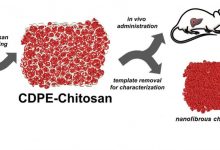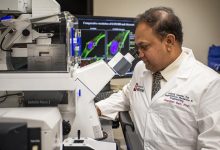
Coronavirus spreads quickly and sometimes before people have symptoms, study finds
Researchers at Austin’s University of Texas studying the novel coronavirus have been able to determine how rapidly the virus can spread, a factor that can aid public health authorities in their containment efforts. They discovered that there is less than a week between cases in a transmission chain and that more than 10 percent of patients are infected by someone who has the virus but has no signs yet.
In the paper in press with the journal Emerging Infectious Diseases, a team of scientists from the United States, France, China and Hong Kong were able to calculate what’s called the serial interval of the virus. To calculate the serial interval, researchers looked at the time it takes for the signs to occur with the virus in two people: the person who infects another person, and the second person who is infected.
Researchers found approximately four days to be the typical serial period for the novel coronavirus in China. It is also amongst the first research to estimate the asymptomatic transmission rates.
The speed of an epidemic depends on two things — how many people each case infects and how long it takes cases to spread. The first quantity is called the reproduction number; the second is the serial interval. The short serial interval of COVID-19 means emerging outbreaks will grow quickly and could be difficult to stop, the researchers said.
“Ebola, with a serial interval of several weeks, is much easier to contain than influenza, with a serial interval of only a few days. Public health responders to Ebola outbreaks have much more time to identify and isolate cases before they infect others,” said Lauren Ancel Meyers, a professor of integrative biology at UT Austin. “The data suggest that this coronavirus may spread like the flu. That means we need to move quickly and aggressively to curb the emerging threat.”
Meyers and her colleagues analyzed more than 450 cases of infection from 93 cities in China and found the best evidence yet that people without symptoms must be transmitting the virus, known as pre-symptomatic transmission. According to the paper, there were more than 1 in 10 infections from people who had the virus but have not yet felt sick.
Previously, researchers had some uncertainty about asymptomatic transmission with the coronavirus. This new evidence could provide guidance to public health officials on how to contain the spread of the disease.
“This provides evidence that extensive control measures including isolation, quarantine, school closures, travel restrictions and cancellation of mass gatherings may be warranted,” Meyers said. “Asymptomatic transmission definitely makes containment more difficult.”
Meyers pointed out that with hundreds of new cases emerging around the world every day, the data may offer a different picture over time. Infection case reports are based on people’s memories of where they went and whom they had contact with. If health officials move quickly to isolate patients, that may also skew the data.
“Our findings are corroborated by instances of silent transmission and rising case counts in hundreds of cities worldwide,” Meyers said. “This tells us that COVID-19 outbreaks can be elusive and require extreme measures.”






